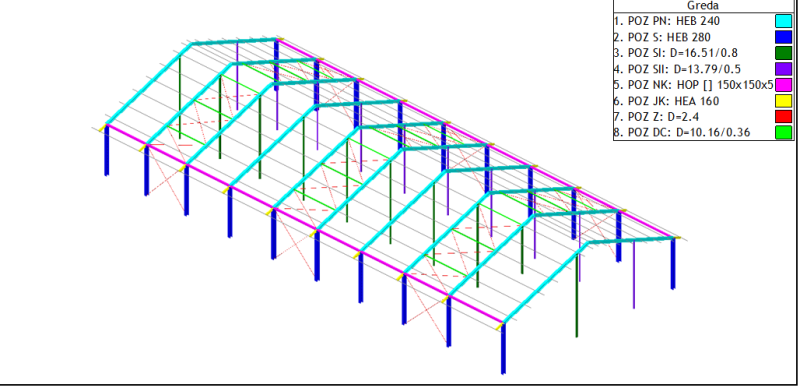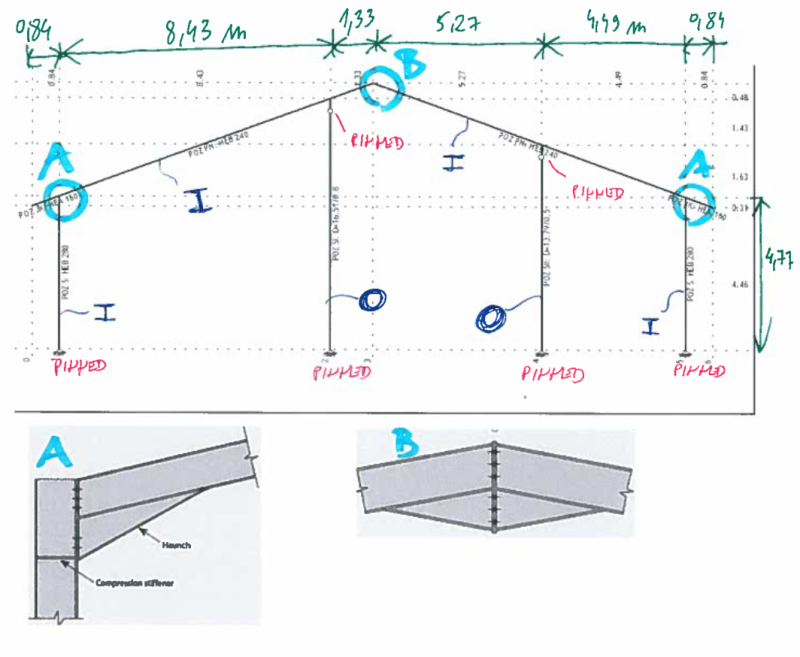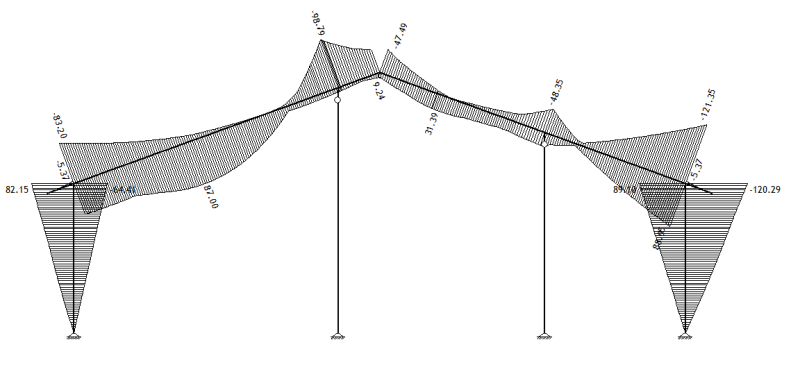greznik91
Structural
- Feb 14, 2017
- 186
Hi, just yesterday I posted a thread about what do you guys usually do when your expectations dont meet analysis results. In this case I was expecting larger dimensions of steel beam (HEB 240). Its a barn construction (Wolf system) but instead of glulam roof beams I have to make it all in steel. I cant get a second opinion in my company about this at the moment so I hope you guys can help me with some opinions on this.
Barn construction: 10 steel frames in transverse direction that are aprox. 5 m apart. Bases of all columns pinned. Moment connections between top of outer columns and beam and in the ridge.


Loads on a single frame:
[URL unfurl="true"]https://res.cloudinary.com/engineering-com/image/upload/v1513151791/tips/loads_rsqkeg.pdf[/url]
Envelope of bending moments:

I was comparing a stiffnes of standard glulam (GL28h) beam used by Wolf system - cross section dimensions of 14/48 cm with a steel beam and I have figured that stiffnes of steel beam is higher so based on that it should be allright.
Esteel = 21000 kN/cm2
Etimber = 1260 kN/cm2
Isteel (HEB 240) = 11260 cm4
Itimber (14/48 cm) = 129024 cm4
Esteel x Isteel = 21000 kN/cm2 x 11260 cm4 = 236460000 kNcm2
Etimber x Itimber = 1260 kN/cm2 x 129024 cm4 = 162570240 kNcm2
Still Id like to hear some opinions on this.
Barn construction: 10 steel frames in transverse direction that are aprox. 5 m apart. Bases of all columns pinned. Moment connections between top of outer columns and beam and in the ridge.


Loads on a single frame:
[URL unfurl="true"]https://res.cloudinary.com/engineering-com/image/upload/v1513151791/tips/loads_rsqkeg.pdf[/url]
Envelope of bending moments:

I was comparing a stiffnes of standard glulam (GL28h) beam used by Wolf system - cross section dimensions of 14/48 cm with a steel beam and I have figured that stiffnes of steel beam is higher so based on that it should be allright.
Esteel = 21000 kN/cm2
Etimber = 1260 kN/cm2
Isteel (HEB 240) = 11260 cm4
Itimber (14/48 cm) = 129024 cm4
Esteel x Isteel = 21000 kN/cm2 x 11260 cm4 = 236460000 kNcm2
Etimber x Itimber = 1260 kN/cm2 x 129024 cm4 = 162570240 kNcm2
Still Id like to hear some opinions on this.


